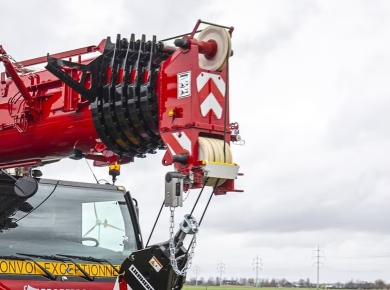As a safety professional, one of the most unsettling realities I’ve faced on job sites is the haunting specter of suspension trauma. It’s the kind of danger that lurks in the shadows, often overlooked in fall protection plans, yet it can have devastating effects on workers who find themselves suspended after a fall. Imagine a crew member hanging in a harness, the adrenaline of the fall wearing off, and the realization setting in that their situation is dire. This is not just an abstract concept; it’s a very real risk that demands our attention.
Understanding Suspension Trauma
Suspension trauma occurs when a person remains upright in a harness after a fall, which can lead to a series of physiological issues. Blood pools in the legs, reducing circulation and oxygen flow to vital organs. Within minutes, the person may lose consciousness and, if not rescued quickly, face severe health complications or even death. It’s a risk that can affect anyone using a harness, yet many workers and supervisors are unaware of the signs or the urgency of this condition.
The Physiological Effects
When suspended, gravity takes hold, and blood begins to collect in the lower extremities. The body’s natural response is to try and compensate, but if this continues, it can lead to a cascade of problems, including cardiovascular collapse. It’s crucial for everyone involved in fall protection to recognize these signs early on. Symptoms may include dizziness, shortness of breath, and a sensation of heaviness in the legs. A worker experiencing these symptoms needs immediate attention, but the challenge lies in ensuring that rescue plans are not just theoretical but practiced and understood by the entire team.
Real-World Incidents
It’s easy to write off safety protocols as just another set of rules until you witness firsthand the consequences of neglect. I remember a specific incident on a construction site where a worker fell from a height of 20 feet. The fall protection system activated, and he was suspended for what felt like an eternity while the team executed a rescue. Thankfully, he was brought down safely, but the minutes felt like hours. He had started showing signs of distress, and it was a stark reminder of how quickly things can go wrong. This experience highlighted the need for immediate rescue plans, not just equipment checks.
Training and Preparedness
Training is not just a checklist item; it’s the backbone of a robust safety culture. Workers must be trained not only on how to use their fall protection systems but also on what to do in the event of a fall. Regular drills that include suspension trauma awareness and rescue operations are essential. Conducting these drills helps ensure that everyone knows their roles and can act quickly and effectively when needed.
Implementing Effective Rescue Plans
Creating an effective rescue plan can mean the difference between life and death. Every site should have a detailed rescue plan tailored to the specific hazards present. This plan should outline the steps to be taken in the event of a fall, including who is responsible for executing the rescue and the equipment required.
Key Components of a Rescue Plan
1. **Identification of Personnel**: Designate a specific team responsible for rescues. This team should be trained and equipped to respond swiftly.
2. **Equipment Readiness**: Ensure that all necessary rescue equipment is readily accessible and in good working condition. This includes ropes, pulleys, and descent devices.
3. **Communication Protocols**: Establish clear communication channels for reporting a fall and coordinating the rescue. Time is of the essence, and confusion can be fatal.
4. **Regular Reviews and Updates**: Like any other aspect of safety, rescue plans should be reviewed regularly to incorporate lessons learned from incidents or near misses.
Creating a Culture of Safety
Promoting awareness of suspension trauma and its implications goes beyond just training and rescue plans. It’s about fostering an overall culture of safety on your site. Encourage open dialogue about safety concerns and empower workers to speak up if they feel uncomfortable or unsafe. Regular safety meetings can provide a platform for discussing not just the rules, but real experiences and lessons learned.
Engaging Workers in Safety Practices
Engagement can be as simple as involving workers in safety audits or giving them the opportunity to lead safety discussions. When workers feel like active participants in their safety, they are more likely to take it seriously. Moreover, sharing real-life scenarios — both successes and failures — can deepen understanding and foster a collective responsibility for safety.
Conclusion: Taking Action Against Suspension Trauma
Suspension trauma is a silent killer that can be easily overlooked in the hustle of everyday work. However, by understanding the risks, implementing practical training, and fostering a culture of safety, we can mitigate this threat. The responsibility lies with all of us — from site managers to individual workers — to ensure that fall protection plans are not only in place but also effective. As we move forward, let’s continue to prioritize safety, not just as a compliance measure, but as a fundamental value that guides our work. After all, every worker deserves to go home safely at the end of the day.


